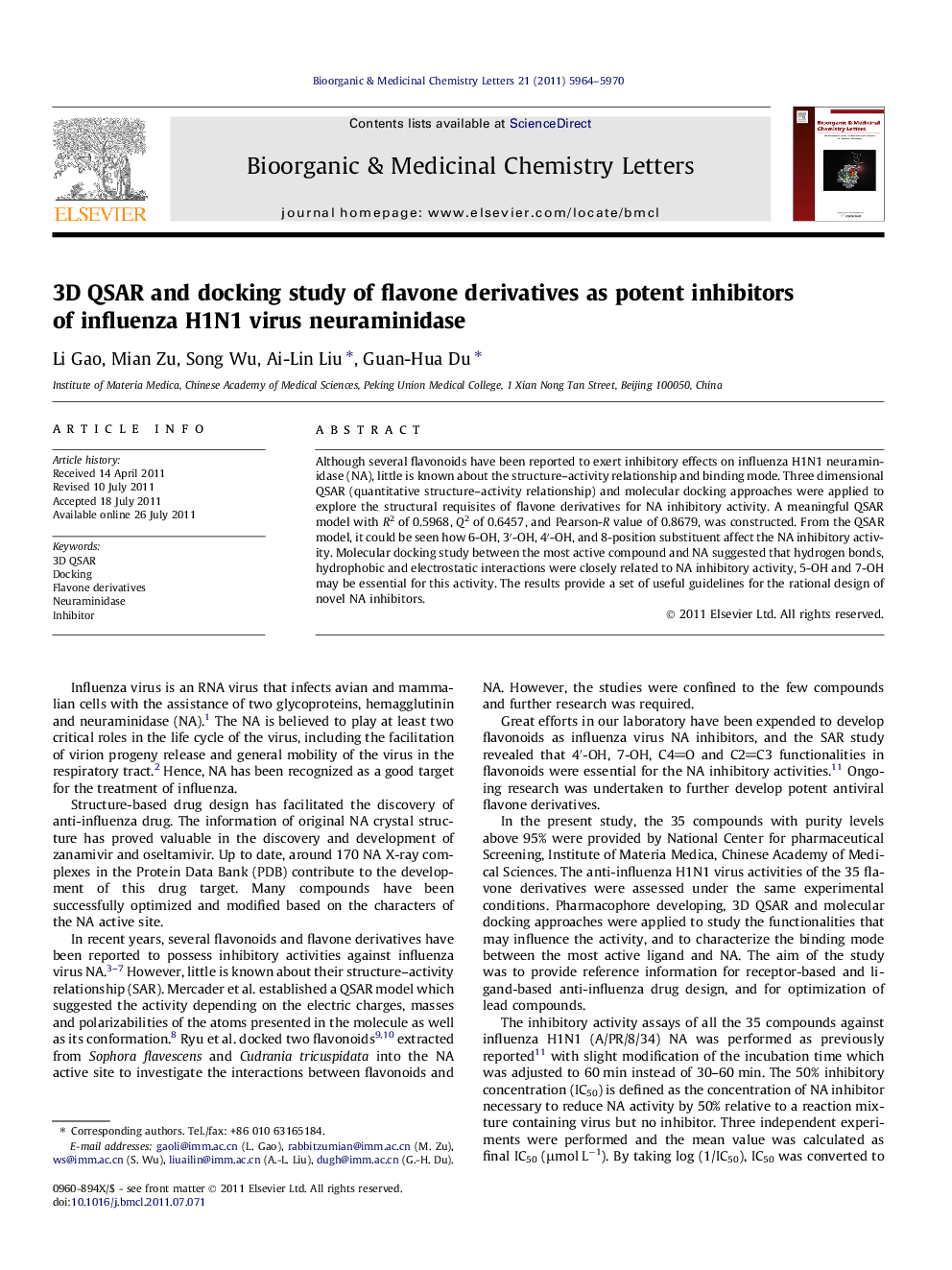| Article ID | Journal | Published Year | Pages | File Type |
|---|---|---|---|---|
| 1372583 | Bioorganic & Medicinal Chemistry Letters | 2011 | 7 Pages |
Although several flavonoids have been reported to exert inhibitory effects on influenza H1N1 neuraminidase (NA), little is known about the structure–activity relationship and binding mode. Three dimensional QSAR (quantitative structure–activity relationship) and molecular docking approaches were applied to explore the structural requisites of flavone derivatives for NA inhibitory activity. A meaningful QSAR model with R2 of 0.5968, Q2 of 0.6457, and Pearson-R value of 0.8679, was constructed. From the QSAR model, it could be seen how 6-OH, 3′-OH, 4′-OH, and 8-position substituent affect the NA inhibitory activity. Molecular docking study between the most active compound and NA suggested that hydrogen bonds, hydrophobic and electrostatic interactions were closely related to NA inhibitory activity, 5-OH and 7-OH may be essential for this activity. The results provide a set of useful guidelines for the rational design of novel NA inhibitors.
Graphical abstractFigure optionsDownload full-size imageDownload as PowerPoint slide
